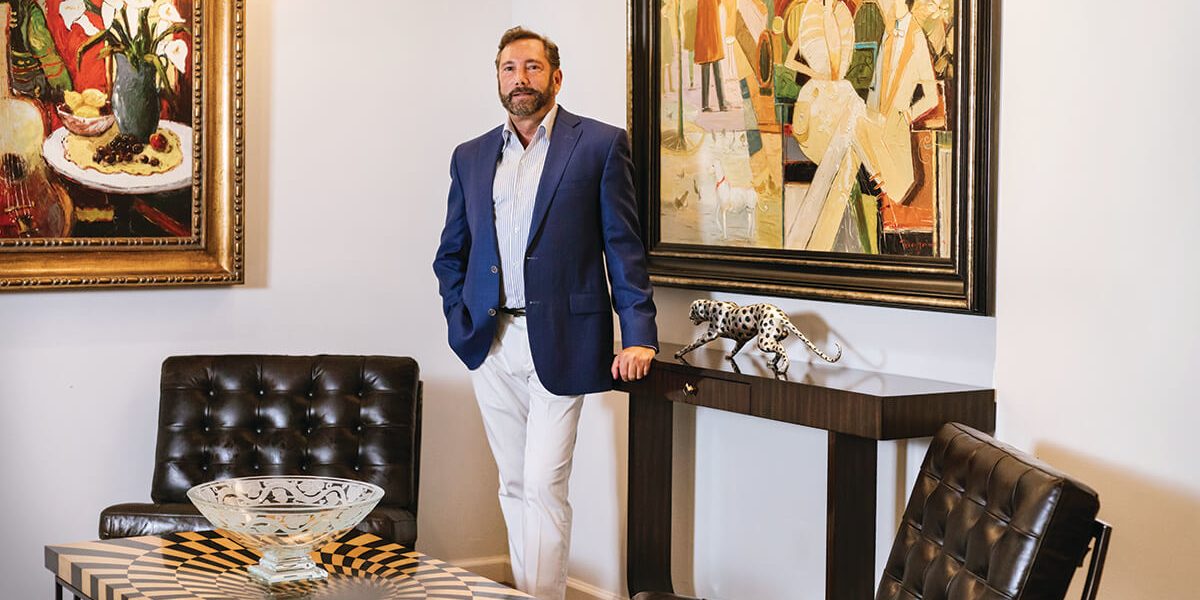Home & Living
Going for Un-Baroque
Once known for his high-end antiques, Mark Klatsky has transitioned to more streamlined looks.
As was the case in the Regency Gallery antiques store on Howard Street’s antique row that Mark Klatsky ran for years, his new venture, called Classic Imports & Design, has loads of the pieces reflecting the European aesthetic of 200 years ago. In the new business’ Cockeysville warehouse, there are the massive dining tables with ornately carved legs, Grecian statues, and richly upholstered sofas, all lit by all sparkling crystal chandeliers.
But there’s something else going on, too. A vignette of furniture, for instance, features a glass coffee table standing on slim tapered silver legs with a matching deco-style chest of drawers. The stark, clean lines and gleaming surfaces of the pieces might seem a bit out of place in this warehouse of gilt, inlaid mahogany, and marble. But on closer examination, it’s clear this grouping isn’t the only contemporary furniture in the 5,000-square-foot showroom. Note, for example, a pair of black tufted Mies van der Rohe-style Barcelona chairs. It’s all part of Klatsky’s measured steps as he moves from sumptuous to streamlined.
Of course, that doesn’t mean he’s lost his love for fine things that drip with 18th-century European style. “The store was always busy,” he recalls of Regency, which transitioned to the new business two years ago. “I couldn’t leave it for even five minutes.”
But now he doesn’t always have to be there: His current business depends largely on online sales. “I’ve been on cruises with my family, and have sold things from the boat.”
And he uses his residence as a sort of online photo backdrop for his pieces: The spacious Harbor East condo showcases the furniture in his inventory, like the shimmering ecru silk upholstery stretched taut on the mahogany-framed sofas and the tigerwood-veneer coffee table, lustrous under its thick polyurethane finish. The living room rug, a woven silk blend with muted gray and beige streaks resembling an impending storm, tells a story: “Years ago, all my clients wanted Persian carpets. Now people want something cleaner, easier on the eye,” Klatsky says.
Much of the contemporary furniture for sale in Klatsky’s condominium comes from companies such as Caracole, John-Richard, and Maitland-Smith—pricey, but not out of reach. Some pieces have burnished silver finishes, while others also salute an earlier age: a gold-painted Greek key design in an otherwise dark wood chair frame, or the fragile bowl of a torchiere lamp resting atop three gold pillars on a marble base.
“The older generation is downsizing, and the younger generation isn’t interested in antiques,” he points out. It’s a familiar saw: Your kids don’t want your brown furniture. “They’ll buy big houses, but they get their furniture at regular stores,” he laments, not mentioning the Swedish I-word or online sites like Wayfair that do a brisk business in Marie Kondo-inspired aspirations of austerity.
Klatsky thinks he’s found the sweet spot. “I try to mix in antiques with more contemporary things,” he says. In the trade, “transitional” refers to décor that blends the old and the new. It’s a straight-backed sofa that you can actually comfortably sit on, draperies that waft in the breeze rather than pooling heavily on the f loor, maybe a gilt-framed oil painting sharing a wall with modernist floating shelves. “It used to be people wanted one or the other, all antique or all modern,” he says. But he now encourages people to try a little of both.
